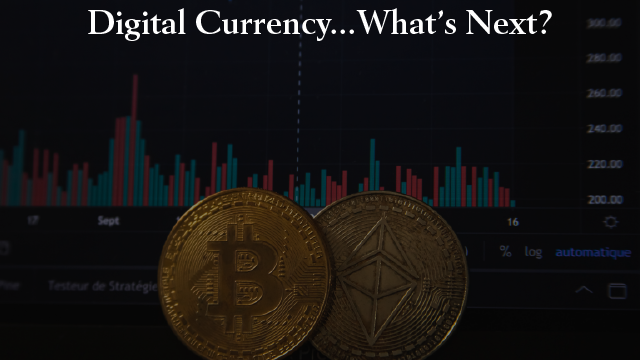
“In Italy, for thirty years under the Borgias, they had warfare, terror, murder, and bloodshed, but they produced Michelangelo, Leonardo da Vinci, and the Renaissance. In Switzerland, they had brotherly love. They had five hundred years of democracy and peace – what did they produce?
The cuckoo clock.”
Spoken by Orson Welles’ character Harry Lime from the 1949 film The Third Man, in this short soliloquy, Lime assures his friend Holly Martins that all the trouble Holly has inadvertently stumbled into over the course of the film hasn’t been for naught, that out the other side of chaos comes greatness. As investors can attest, the first half of 2022 may have felt like 30 years, what with rising inflation, fears of a recession, and the S&P 500’s annual inflation-adjusted total returns being the worst since 1872[1].
The violent downturn in the worldwide markets has been most pronounced in the cryptocurrency market. The total value of all cryptocurrencies has dropped from almost $3 trillion at its peak, to under $1 trillion[2]. A long-held aspiration that digital currencies would become a new flight to safety, shielded from changes in interest rates or inflation, has been greatly damaged. Even stablecoins, coins designed to mirror the value of a hard currency, have failed to live up to that promise in spectacular fashion[3].
Does this spell the collapse of cryptocurrency? More than likely not.
The chaotic fervor that fed into cryptocurrency’s collapse could prove to be a cleansing storm. The aftermath may wash away the hazardous waste around the industry, forcing its focus back on the tangible benefits it could provide. Hucksters promoting scam currencies, exorbitant, unrealistic returns, and the promise of fast money may perhaps be replaced with a realistic picture of a legitimate financial sector.
What type of changes could be coming?
To begin with, there will no doubt be more regulation. Even before the crash, regulators had their sights set on digital currencies. The forementioned spectacular meltdown of the stablecoin Terra has rebuffed their efforts[4]. Arguments whether regulation is going to quash innovation will rage on in vain – it’s coming, one way or another. Regulation could turn into a positive though, as investor protection will be put at the forefront. It could be a vote of confidence in the eyes of investors that the crypto market is a lawful market worthy of putting in their hard-earned dollars.
Within such guidelines, the role of digital currencies and the blockchain technology it’s built upon could start to impact the financial sector for the better. The validation methodology cryptocurrencies utilize make things like payments and authenticating contracts much more efficient, becoming more cost effective in the process.
Easy access to a low cost, digital payment system could be beneficial for low-income consumers, small business owners, and those in developing nations where there is a lack of faith in domestic currencies. Online payment apps made useful inroads but blockchain technology and cryptocurrency have given access to those in countries where the existing financial structure cannot, or will not, meet the needs of the consumer.
Will this fulfill the promise of cryptocurrency’s premise – to completely circumvent “The Man,” putting finance solely in the hands of the people? Also, more than likely not.
Established financial institutions have started their own blockchain and cryptocurrency divisions. They are utilizing blockchain to more efficiently facilitate cross-border payments and transactions amongst themselves. This could potentially squeeze out the little guys, while simultaneously cutting competition off at the knees.
The future probably lies somewhere in the middle. Perhaps not quite the stick of dynamite to the entrenched institutions that early proponents dreamed it to be, cryptocurrency will weave into the fabric of daily life. With so many institutions acknowledging the space, the fight for legitimacy did work.
Harry Lime walks away after delivering the famous cuckoo clock speech, leaving Holly at the foot of a Ferris wheel to contemplate what it all meant. If we take him for his word, those thirty years under the Borgias were the catalyst for the Renaissance, which gave society the printing press, the scientific method, eyeglasses, and so much more – things that are, frankly, boring, but necessary for everyday life.
The future of digital currency might not garner the same flashy headlines, endless debates, and hot takes. It may just become part of everyday life.
Joe Gallina
 Joe has a degree in Finance from the University of Illinois at Chicago. Afterwards, he worked for Morgan Stanley and Bank of America/Merrill Lynch, obtaining both Series 7 and 66 licenses. At Merrill, he was on the self-directed side of the business, exposing himself to every aspect of the financial services industry.
Joe has a degree in Finance from the University of Illinois at Chicago. Afterwards, he worked for Morgan Stanley and Bank of America/Merrill Lynch, obtaining both Series 7 and 66 licenses. At Merrill, he was on the self-directed side of the business, exposing himself to every aspect of the financial services industry.
[1] https://dailyshotbrief.com/the-daily-shot-brief-july-8th-2022/
[2] https://www.reuters.com/business/finance/cryptocurrency-market-value-slumps-under-1-trillion-2022-06-13/
[3] https://www.coindesk.com/learn/the-fall-of-terra-a-timeline-of-the-meteoric-rise-and-crash-of-ust-and-luna/
[4] https://www.forbes.com/sites/billybambrough/2022/07/03/biden-official-reveals-crypto-plans-amid-2-trillion-terra-luna-led-bitcoin-ethereum-bnb-xrp-solana-cardano-and-dogecoin-price-crash/?sh=3ec20e8524eb
